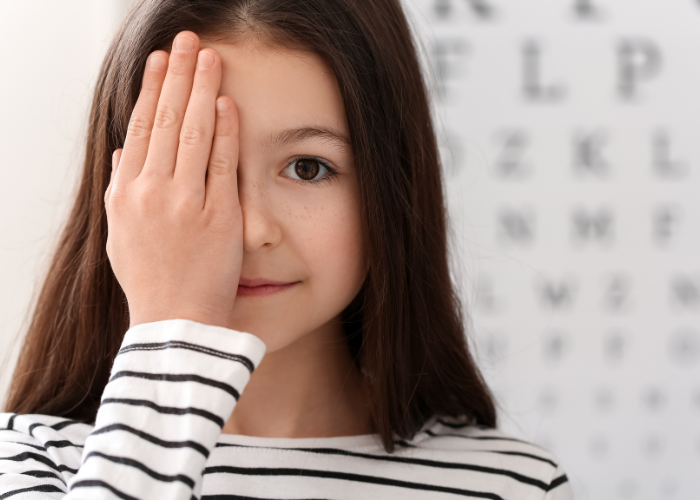A stye is a common eye problem that affects both children and adults. It is also sometimes called a chalazion or hordeolum. Although it rarely causes severe complications or visual difficulties, it can become infected and should be evaluated by an ophthalmologist as soon as possible.
If your child has a swelling or red bump in or near the eyelids, then that may be a stye, chalazion, or hordeolum. Learn more about its causes, symptoms, and treatment options below.
What is a stye?
A stye, chalazion, or hordeolum, refers to an eye condition characterized by a small, sometimes painful bump on the inside or outside rim of the eyelid.
Generally, children with styes do not complain of any severe symptoms, only that the condition is unsightly and bothersome. Children who develop it may experience some of the following symptoms:
- A small, sore lump, bump or swelling at or near the eyelid.
- Redness in or around the bump.
- Eye irritation
- Eyelid pain or discomfort
- Increased tear formation
- Feeling heavy in the affected eyelid.
- Yellowish or pus-filled if infected.
So if you notice anything out of the ordinary in your child’s eye, then the best course of action is to go to a pediatric eye doctor to get it checked.
What causes a stye?
The eyelid has many oil-producing glands that help keep the eye lubricated. However, these glands can become clogged with dead skin cells, old oil, and eyelid bacteria. As materials build up, it can then result in a pimple-like bump that can get sore and inflamed.
How is it diagnosed?
An ophthalmologist diagnoses a stye through a physical examination. The child may present with a bump on the eyelid. It may also appear as a pustule that may be filled with pus or exudates.
A medical eye doctor can also differentiate a stye from other eye conditions using physical examination and medical history.
How do you treat a stye?
Most styes are self-limiting and get better without any treatment after a few weeks. A stye will sometimes open and drain on its own. You can help to get rid of the stye, prevent infection, and hasten recovery by doing these simple home remedies:
Warm compresses
Apply a warm compress to the affected eye for 15 minutes. You can do this several times a day until the stye softens and starts draining. It is preferable to use something that retains heat, such as a compress that can be purchased from the pharmacy and heated in the microwave.
Use eye-scrub soap
Use special eye-scrub soap or baby shampoo to gently cleanse the eye area, especially once it starts draining. You can soak a cotton swab in the solutions and use it to clean the eye area. Using such solutions can help keep the eyes clean while preventing infection without hurting the eyes.
Clean the eye area
You may also clean the eye area using a damp tissue or makeup pad to clean out any discharge or crust that may have formed in the eye area.
Refrain from touching the eye
Instruct your child to clean and wash their hands thoroughly and refrain from touching the eye and face. They should also avoid squeezing or rubbing the affected eye. Lastly, children should also avoid wearing makeup, contact lenses, or any other eye product until the stye heals.
Visit an ophthalmologist
If the stye does not clear itself out after a few days, exhibits severe symptoms, or gets worse, then make a trip to your pediatric eye doctor in NJ at once. Your child’s doctor may perform the following treatment options:
- Drain the stye through a small incision (with anesthesia if necessary).
- Prescribing antibiotic ointment and oral antibiotics to prevent both local and systemic infection.
- Administer a steroid injection into the stye to help with the inflammation.
Get a prompt and proper diagnosis at Pediatric Eye Associates
Generally, most styes should not be a cause for concern. But if it does not improve after 48 hours, you can turn to one of our pediatric ophthalmologists for a check-up.
Pediatric Eye Associates is one of the leading medical and surgical eye care centers for children. Our board-certified ophthalmologists are trained to handle children, diagnose acute and chronic eye problems, and create a treatment plan that suits patients’ individual needs.
Contact us now to know more about our services, or visit our webpage to learn about various eye conditions that can affect your children.
The material contained on this site is for informational purposes only and DOES NOT CONSTITUTE THE PROVIDING OF MEDICAL ADVICE, and is not intended to be a substitute for independent professional medical judgment, advice, diagnosis, or treatment. Always seek the advice of your physician or other qualified healthcare providers with any questions or concerns you may have regarding your health.

